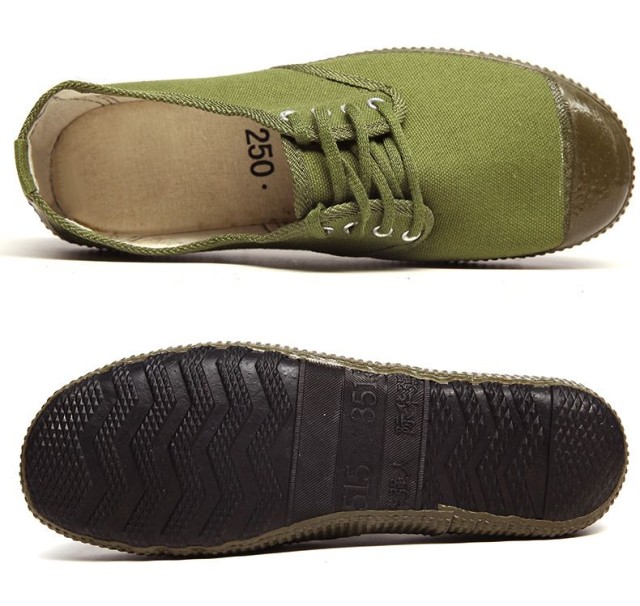Slip-resistant shoes aren’t just a convenience—they’re a critical safety tool in workplaces where falls cause nearly a quarter of all injuries. Whether you’re a restaurant worker navigating greasy floors or a construction professional braving uneven terrain, the right rubber-soled shoes can mean the difference between a safe shift and a preventable accident. This guide breaks down the science of slip resistance, from tread patterns to OSHA compliance, helping you select footwear that truly protects.
What Makes Rubber Soles Slip-Resistant?
The Role of Tread Patterns in Traction
Tread design is the first line of defense against slips. Effective patterns—like hexagonal or circular grooves—channel liquids away from the sole’s contact area. Research shows these designs reduce hydroplaning by creating escape routes for water or oil, rather than trapping moisture underneath. For wet environments (e.g., kitchens or hospitals), prioritize multidirectional treads with deep, closely spaced grooves.
Rubber Compounds: From Natural to High-Traction Blends
Not all rubber performs equally. Natural rubber offers flexibility but wears quickly, while synthetic blends (e.g., nitrile or carbon-infused rubber) enhance durability and grip. High-traction soles often incorporate micro-textures—tiny bumps or pores—to increase surface friction. For oily surfaces, look for oil-resistant rubber rated for industrial use.
How Sole Design Distributes Pressure
A flat sole increases slip risk by concentrating weight on fewer points. High-performance soles use:
- Contoured footbeds: Spread pressure evenly across the foot.
- Flex grooves: Improve flexibility without sacrificing traction.
- Heel brakes: Angled heels slow momentum on inclines.
Choosing Shoes for Your Environment
Workplace Safety: OSHA Standards and Industry Examples
OSHA mandates slip-resistant footwear in high-risk settings like warehouses, kitchens, and healthcare facilities. Compliant shoes often meet ASTM F3445 or similar standards, verified through independent testing. For example:
- Restaurants: Shoes with oil-resistant soles reduce slip-related injuries by over 50% in fast-food kitchens.
- Construction: Lug-style treads handle mud and gravel, while puncture-resistant midsoles protect against sharp debris.
Outdoor vs. Indoor: Adapting to Surface Types
| Surface Type | Key Features |
|---|---|
| Wet/Oily Floors (e.g., kitchens) | Micro-grooved soles, oil-resistant rubber |
| Polished Floors (e.g., hospitals) | Soft rubber compounds, wide contact area |
| Uneven Terrain (e.g., construction) | Deep lugs, aggressive tread spacing |
Testing and Certifications
What is the ASTM F2913 Test?
This standardized test measures slip resistance on wet, oily, and dry surfaces using a tribometer (a device that simulates foot movement). Shoes are rated on a scale from 0 (least resistant) to 1 (highly resistant), with 0.4+ considered safe for most workplaces.
Interpreting Slip Resistance Ratings
- 0.3–0.4: Adequate for dry/low-risk areas.
-
0.5+: Ideal for kitchens, factories, or hospitals.
Look for labels like "ASTM F2913-11" or "SATRA TM144" (a European equivalent).
Put Safety First with 3515 Footwear
Choosing slip-resistant shoes isn’t just about compliance—it’s about protecting your workforce from costly injuries. 3515 designs scientifically backed footwear for distributors and bulk buyers, combining advanced rubber technology with industry-specific safety features. Whether you need oil-gripping soles for restaurant staff or rugged treads for outdoor crews, our solutions prioritize traction, durability, and comfort—because every step should be secure.
Ready to equip your team with reliable slip-resistant shoes? Partner with 3515 to customize safety footwear tailored to your environment.
Related Products
- Durable Leather Moc Toe Work Boots for Wholesale & Custom Manufacturing
- Durable High-Traction Canvas Sneakers Wholesale & Custom Manufacturing
- Durable Moc-Toe Wedge Work Boots | Wholesale Manufacturing for Brands
- Puncture-Resistant Velcro Safety Boots for Wholesale & Custom Manufacturing
- Durable Rubber-Soled Utility Shoes for Wholesale & Custom Brand Manufacturing
Related Articles
- How Slip-Resistant Outsoles Prevent Injuries and Ensure Tactical Success
- How ASTM-Compliant Boots Prevent Workplace Injuries: A Safety Guide for Industrial Buyers
- How Zip-Up Work Boots Combine Speed with Industrial Safety Standards
- How Slip-Resistant Tactical Boots Prevent Workplace Injuries: Science and Standards Explained
- Oil-Resistant Work Boots: Essential Features and Industries That Need Them



















